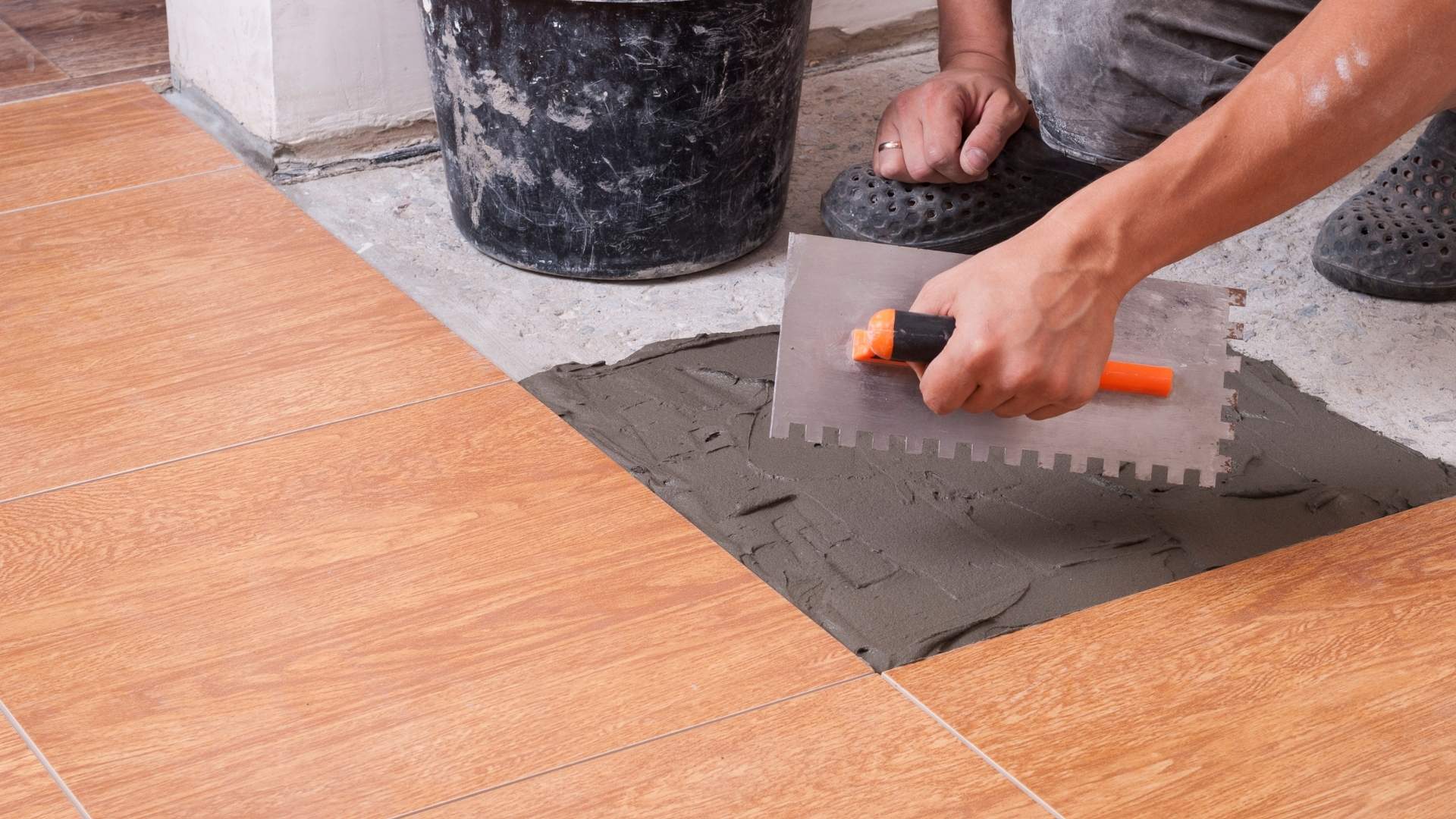Do Tiles Stick To Wood?

Yes, tiles stick to wood. However, because of the flexibility of wood, the ways it can bounce, expand and contract, can cause issues like tiles cracking later on down the line. There are a few things you need to consider if you want tiles to stick to wood.
Because wood can absorb water, it could be subject to expansion. Which will cause the tiles to become under stress. This will lead to them cracking or becoming dislodged from the adhesive used under the tiles.
Follow this guide to make sure your tiles stick to wood.
These are some common issues when mounting tiles to a wooden floor:
- The wood bending under the load, causing the surface to be more uneven after adding the tiles. Which can cause the tiles to pop off the adhesive or even crack. The larger the tile, the more this could affect the situation as it will need to be more consistent over a larger surface area.
- Wooden board movements, if the floor isn’t fully supported, the boards could move or be dislodged which is especially prevalent in high traffic areas like a kitchen or living room. This causes the tiles placed on the wood to become dislodged or crack.
- Temperature related expanding and contraction. As we have our homes warm up and cool down through the year and at different times of the day. This can cause the wood to move, and as the adhesive and tiles will not be expanding and contracting at the same rate could again cause issues with the tiles stuck to the wood.
- Water-related expanding and contraction, much the same as the heating issue, even with room humidity changing can cause wood to swell or contract. This will also change throughout the year in many areas of the wood, so could cause an issue sticking your tiles to a wooden floor.
Wooden floor types your sticking your tiles to
There are 3 main wooden floor types –
- Wooden boards
- Tongue and groove boards
- Sheet plywood
The type of floor will determine the method you need to choose and how hard it could be to stick your tiles to wood.
Wood boards
Tiling onto wooden boards is possible the hardest method. They are subject to more movement than the other flooring types. Before tiling this flooring type, it is best to either use a wood tiling board or a levelling compound to minimise movement in the floor to keep your tiled surface from developing issues later on. Even the most flexible adhesives will not be able to cope with the movement on these floorboards.
Tongue and groove boards
As these types of floorboards interlock, there is far less movement within the boards. Although, if not fully supported, the floor could still cause issues later on. If your floor is fully supported, you may get away without using a tiling board or levelling compound before tiling the surface. You will need to use a flexible adhesive for sticking down the tiles to this wooden floor type as you will still get movement from temperature and humidity. A flexible adhesive moves better with the wooden floor and therefore stops your tiles from becoming loose or cracking.
Sheet Plywood
Sheet plywood is probably the easiest wood to tile. This is because it being one flat sheet, you won’t have many gaps which produce movement on your tiling surface. You will need to make sure it is still well supported, especially the edges or joints between two sheets. Doing this will stop any flexing of the wood, which will cause issues with your tiles later on.
You will still need to use a flexible tile adhesive to stick these tiles to the plywood. As it would still be hard to eradicate all of the movement.
So what have we learnt so far about sticking tiles to wood?
We know that 4 common problems could occur with the wooden floor when tiling it. The best way is to minimise the about of movement to give your tiled floor the best chance.
Using a flexible adhesive to fix the tiles to the wooden floor is very important as it will help with any other movement the wood is subjected to.
These effects can be magnified on larger tiles so using a smaller tile would help if any of the 4 issues tiling a wooden floor occur.
Do I need to treat the wood before tiling the floor?
Sealing the wood you’re adding your tiles to is a great idea. It will help with the expansion and contraction of your wooden floor during humidity changes.
You can seal the wood with PVA or a wood sealant to achieve this.
Conclusion for sticking tiles to a wooden surface
Yes, you can stick tiles to a wooden floor as long as it is rigid enough, you use a flexible adhesive, and your tiles are not too big.
